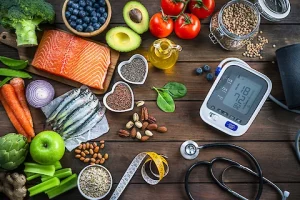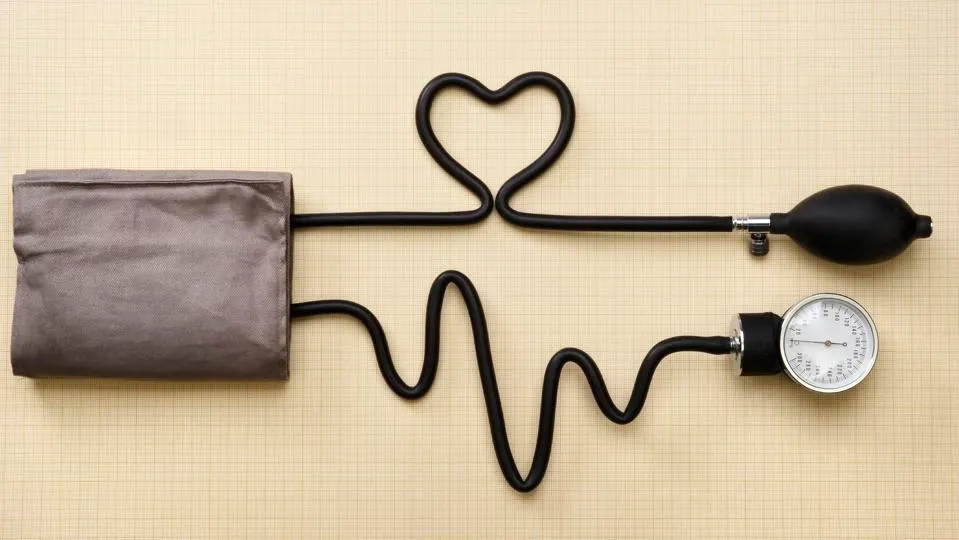Understanding Blood Pressure:
Normal Range of BP:
The normal range for blood pressure is typically considered to be around 120/80 millimeters of mercury (mm Hg). The measurement consists of two values:
- Systolic Pressure: The pressure in the arteries when the heart beats and pumps blood – it is the higher of the two numbers.
- Diastolic Pressure: The pressure in the arteries when the heart is at rest between beats – it is the lower of the two numbers.
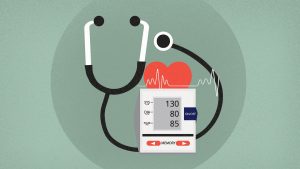
How to Know If You Have BP Issues:
- Regular Blood Pressure Monitoring:
- Measure your blood pressure regularly using a home blood pressure monitor or by visiting a healthcare professional. Track both systolic and diastolic readings.
- Recognize Symptoms:
- Be aware of common symptoms associated with blood pressure issues, such as persistent headaches, dizziness, blurred vision, chest pain, or fainting. Consult a healthcare provider if you experience these symptoms.
- Routine Check-ups:
- Include blood pressure measurements as part of routine check-ups with your healthcare provider. Regular screenings can help identify any fluctuations or abnormalities in blood pressure.
- Maintain Health Records:
- Keep a record of your blood pressure readings, lifestyle habits, and any symptoms you may experience. Share this information with your healthcare provider for a comprehensive assessment and appropriate guidance.

High blood pressure (hypertension):
High blood pressure is a common condition that affects the body’s arteries. It’s also called hypertension. If you have high blood pressure, the force of the blood pushing against the artery walls is consistently too high. The heart has to work harder to pump blood.
Blood pressure is measured in millimeters of mercury (mm Hg). In general, hypertension is a blood pressure reading of 130/80 millimeters of mercury (mm Hg) or higher.
The American College of Cardiology and the American Heart Association divide blood pressure into four general categories. Ideal blood pressure is categorized as normal.)
- Normal blood pressure. Blood pressure is 120/80 mm Hg or lower.
- Elevated blood pressure. The top number ranges from 120 to 129 mm Hg and the bottom number is below, not above, 80 mm Hg.
Stages of Hypertension:
- Stage 1 hypertension. The top number ranges from 130 to 139 mm Hg or the bottom number is between 80 and 89 mm Hg.
- Stage 2 hypertension. The top number is 140 mm Hg or higher or the bottom number is 90 mm Hg or higher.
Blood pressure higher than 180/120 mm Hg is considered a hypertensive emergency or crisis. Seek emergency medical help for anyone with these blood pressure numbers.
Untreated, high blood pressure increases the risk of heart attack, stroke and other serious health problems. It’s important to have your blood pressure checked at least every two years starting at age 18. Some people need more-frequent checks.
Healthy lifestyle habits —such as not smoking, exercising and eating well — can help prevent and treat high blood pressure. Some people need medicine to treat high blood pressure.
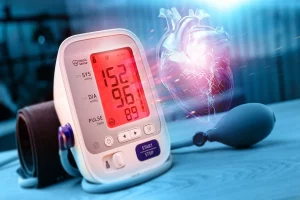
Symptoms:
Hypertension, or high blood pressure, is often referred to as the “silent killer” because it may not cause noticeable symptoms until it reaches severe levels. When symptoms do occur, they may include:
- Headaches: Persistent headaches, especially in the back of the head, can be a symptom.
- Dizziness or Lightheadedness: Feeling dizzy or lightheaded, especially when standing up, may occur.
- Nosebleeds: While not a common symptom, some individuals with hypertension may experience frequent nosebleeds.
- Shortness of Breath: Difficulty breathing or shortness of breath may be noticed, particularly during physical exertion.
- Vision Changes: Blurred or impaired vision can occur in some cases.
- Chest Pain: Although less common, chest pain or discomfort may be associated with severe hypertension.
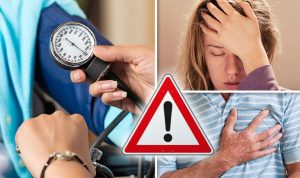
Causes:
- Unhealthy lifestyle habits (poor diet, lack of exercise)
- Genetic factors (family history)
- Age-related changes in arteries
- Obesity
- Tobacco use (smoking, secondhand smoke)
- Excessive alcohol consumption
- Chronic kidney disease
- Sleep apnea
- Chronic stress
- Certain medications (e.g., oral contraceptives, decongestants)
- Other health conditions (diabetes, hormonal disorders)
Complications:
- Heart Disease
- Stroke
- Kidney Damage
- Vision Loss
- Peripheral Artery Disease (PAD)
- Aneurysms
- Cognitive Decline
- Metabolic Syndrome
- Pregnancy Complications
- Sexual Dysfunction
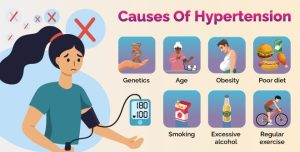
Low Blood Pressure
The medical word for low blood pressure is hypotension.
Causes:
- Dehydration: Insufficient fluid in the body can lead to low blood volume and subsequently low blood pressure.
- Severe Infections (Septicemia): Infections that result in a widespread inflammatory response can lead to a significant drop in blood pressure.
- Heart Problems: Conditions such as extremely low heart rate (bradycardia), heart valve problems, and heart attack can cause low blood pressure.
- Endocrine Issues: Some gland disorders, like underactive thyroid (hypothyroidism), adrenal insufficiency (Addison’s disease), and low blood sugar (hypoglycemia), can result in low blood pressure.
- Severe Allergic Reactions (Anaphylaxis): An acute allergic reaction can cause a rapid drop in blood pressure.
- Blood Loss: Losing a significant amount of blood from major trauma, surgery, or internal bleeding reduces the amount of blood in the body, leading to a severe drop in blood pressure.
- Severe Dehydration: Loss of water from the body, often due to vomiting, diarrhea, or excessive sweating, can result in low blood pressure.
- Lack of Nutrients in Your Diet: A lack of the vitamins B-12 and folate can prevent your body from producing enough red blood cells, causing low blood pressure.
- Severe Inflammation: Diseases that result in widespread inflammation, including lupus and rheumatoid arthritis, can lower blood pressure.
- Neurally Mediated Hypotension: A disorder that causes blood pressure to drop after standing for long periods, leading to fainting.
Symptoms:
Symptoms of low blood pressure may include:
- Blurry vision
- Confusion
- Dizziness
- Fainting (syncope)
- Lightheadedness
- Nausea or vomiting
- Sleepiness
- Weakness

Possible Complications:
Falls due to low blood pressure in older adults can lead to a broken hip or spine fracture. These injuries can reduce a person’s health and ability to move about.
Sudden severe drops in your blood pressure starves your body of oxygen. This can lead to damage of the heart, brain, and other organs. This type of low blood pressure can be life threatening if not treated right away.
Prevention:
Your provider may recommend certain steps to prevent or reduce your symptoms including:
- Drinking more fluids
- Getting up slowly after sitting or lying down
- Not drinking alcohol
- Not standing for a long time (if you have NMH)
- Using compression stockings so blood does not collect in the legs
